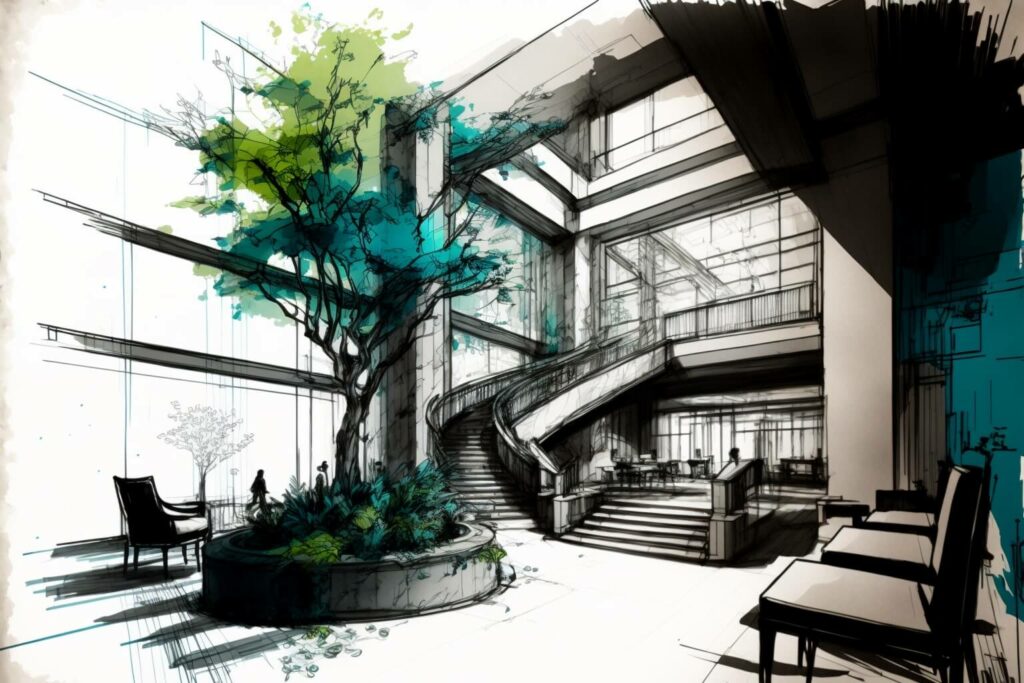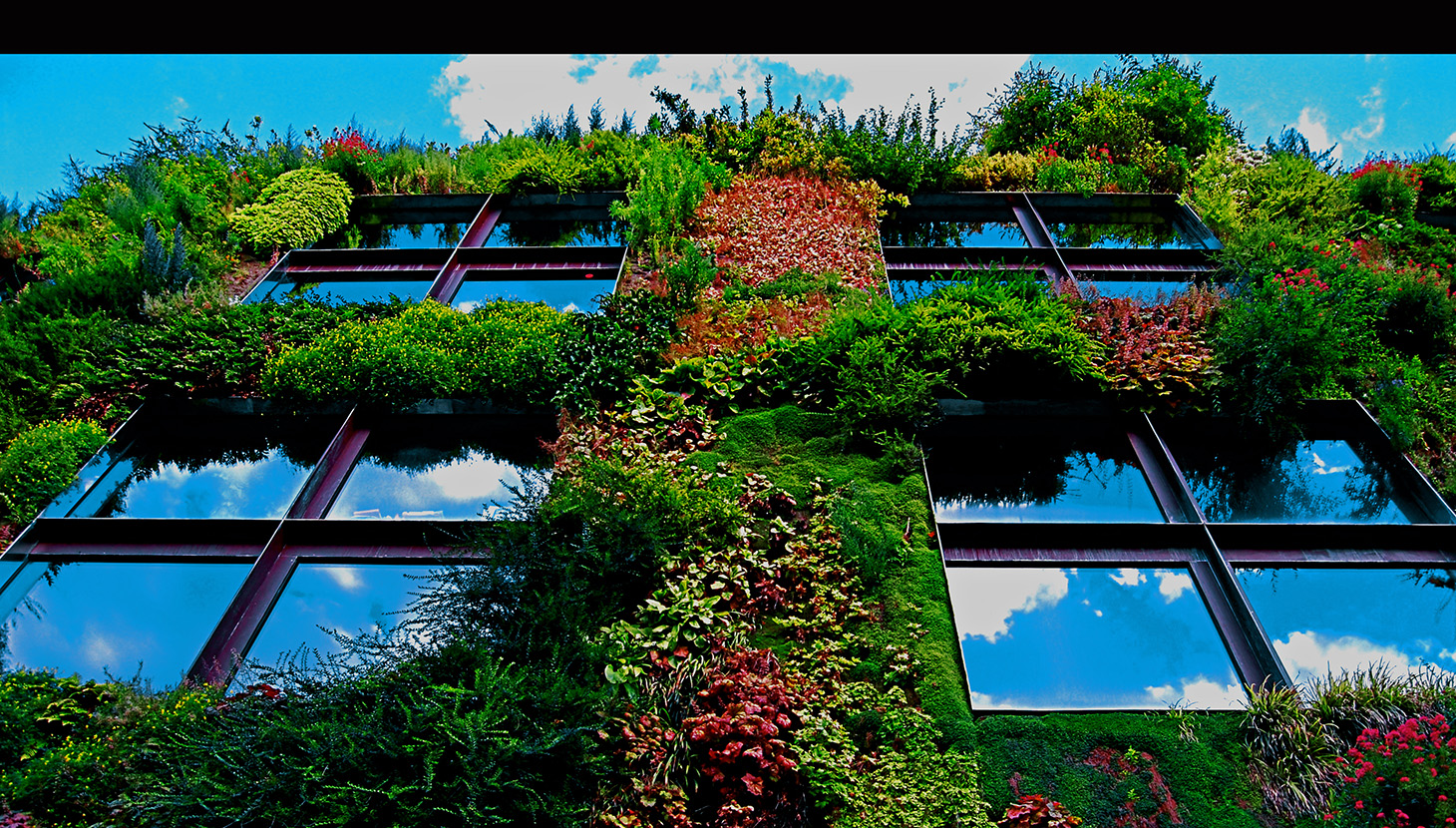Table Of Content

In either case, the temporal component is usually the key factor in pattern recognition and the triggering of a deeper awareness of a functioning ecosystem. Singapore’s Khoo Teck Puat Hospital by RMJM Architects is an excellent example of Thermal & Airflow Variability. The passive design of the hospital draws fresh air in from the exterior courtyards; the cool air helps maintain thermal comfort, while patients also have operable windows in their rooms, allowing for greater personal control. The façade and internal layouts are designed to enhance daylight and light/shade variability while reducing glare. Connecting, elevated exterior walkways also provide access to breezes, shade and solar heat. When an individual experiences thermal discomfort, he or she will likely take action to adapt (e.g., put on a sweater; move to a different seat; submit a complaint).
Building-scale examples of application
As Salingaros (2012) points out, identifying precise fractal geometries in existing naturescapes, structures and artworks is a challenge, whereas generating new works with complex fractals is quite easy, so specifying fractal artwork, for instance, may not always be the most efficient use of project resources. The Yale Center for British Art in New Haven, CT, by Louis Kahn utilizes natural lighting to sofly illuminate art and create dramatic experiences. Early research showed that productivity is higher in well daylighted work places, sales are higher in daylit stores, and that children performed better in daylighted classrooms with views – the research focus was on lighting strategy and task performance and less on human biology.
City-scale
The last decade has seen a steady growth in work around and the intersectionsof neuroscience and architecture, both in research and in practice; even greenbuilding standards have begun to incorporate biophilia, predominantly for itscontribution to indoor environmental quality and connection to place. Mostrecently, biophilic design is being championed as a complementary strategy foraddressing workplace stress, student performance, patient recovery, communitycohesiveness and other familiar challenges to health and overall well-being. Research shows a strong connection between staff performance and access to nature – including outdoor views and natural lighting.
Biophilic office design paves the way for a greener, more sustainable Atlanta - Atlanta Business Chronicle - The Business Journals
Biophilic office design paves the way for a greener, more sustainable Atlanta - Atlanta Business Chronicle.
Posted: Wed, 07 Jun 2023 07:00:00 GMT [source]
Biophilic Interiors: 21 Projects that Blend Architecture with Nature
The paper presents a framework for biophilic design that is reflective of the nature-health relationships most important in the built environment – those that are known to enhance our lives through a connection with nature. The benefits of biophilic design represent a huge opportunity for healthcare facilities to improve the patient and caregiver experience. In our second blog exploring The Economics of Biophilia, we take a deeper look at how incorporating biophilic elements in healthcare design can positively impact both patients and staff in ways that can also offer financial benefits for facilities.
Biophilic Design Examples by Others
The hospital also uses transitional spaces to make occupants more connected to the outdoors and has organized complexity throughout its overall architectural design. KTP has created a sense of place for occupants and neighbors, as it acts as a communal place for both those who work there and live nearby. Fallingwater, one of Frank Lloyd Wright's most famous buildings, exemplifies many biophilic features. According to Study 3, the most important barriers to creating a biophilic healing environment are generated in the decision-making process before designing the healthcare settings.

Biophilic Design In The Modern World
Biophilic design is the practice of reconnecting people and nature within the built environment. Biophilic design involves translating elements derived from nature, into design outcomes that ultimately improve the health and wellbeing of occupants and foster a connection with nature [1]. Technically, it still is, though the quality of the nature that surrounds us has changed. By 2050, it’s estimated that percentage will increase to 66%—two thirds of the world’s population! Generally, humans spend 93% of our time indoors separated from natural elements. In many ways, it could be argued that the research is really just corroborating the rediscovery of the intuitively obvious.
Five of the studies employed information relevant to inpatient environmental demands, particularly in cancer settings. The inpatient column in Figure 2 summarizes the synthesized findings of what seem to be the most important biophilic design parameters for clinical environments for inpatient users. The most essential parameters for patients who spend most of their time in the wards or hospital rooms on their beds were view, prospect, and daylight through windows. These parameters were usually mentioned with regard to their visual impact as these patients’ mobility was limited.
Principles of Biophilic Building Design
As such, the maximization of accessibility and the removal of barriers were stressed. This included rapid and easy access between outdoor settings, foyer-waiting rooms, and treatment settings (Study 5) with safety considered as an over-arching priority in relation to movement. For example, the use of nonslip surface materials, smooth paved paths, ramps rather than steps and color contrasting curbing along pathways were mentioned.
Along with natural interventions and construction materials, organic/biomorphic forms and textures also serve as strong references to patterns found in nature. Curves, for instance, have already been dominating interior design trends during the past couple of years, but it actually dates back centuries to when architects found inspiration in nature from the asymmetrical lines of flowers and animals. And since the human psyche prefers curved visual objects because they signal lack of threat, the architectural expression of organic forms in interior design was translated into furniture, lighting, textile, partitions, and wall motifs. The Prospect pattern argues that we are predisposed to prefer expansive views across landscapes, because throughout our evolutionary history they offered us surveillance and planning opportunities, and increased our chances of survival (Beatley, 2016).
Natural materials can be decorative or functional, and are typically processed or extensively altered (e.g., wood plank, granite countertop) from their original ‘natural’ state, and while they may be extracted from nature, they are only analogous of the items in their ‘natural’ state. A space with a good Material Connection with Nature feels rich, warm and authentic, and sometimes stimulating to the touch. A Material Connection with Nature is material and elements from nature that, through minimal processing, reflect the local ecology or geology to create a distinct sense of place. There are essentially two approaches to applying Biomorphic Forms & Patterns, as either a cosmetic decorative component of a larger design, or as integral to the structural or functional design. The organic and curvaceous stairs, mosaics, railings, light fixtures, window details and other decorative elements of the Hotel Tassel in Brussels, by Victor Horta are a classic example of Biomorphic Forms & Patterns. A space with good Biomorphic Forms & Patterns feels interesting and comfortable, possibly captivating, contemplative or even absorptive.
The biophilic design of Tsuki Restaurant wins global recognition for innovative dining experience - The Financial Express
The biophilic design of Tsuki Restaurant wins global recognition for innovative dining experience.
Posted: Wed, 16 Aug 2023 07:00:00 GMT [source]
The selected studies were localized in industrialized Western countries and typically of less than high methodological quality. Studies 8 and 9, showing the lowest level of reliability, proved not to contradict the high-quality studies but did not offer any further evidence to the synthesis, having no input into the design recommendations. Climate and culture influence human perceptions of nature, so as more research is conducted in various regions, climates, and cultures, a wider range of data will contribute toward more effective biophilic design frameworks. An increasing amount of scientific research suggests that people are more productive, creative, happy and healthy when they experience a daily connection with nature, and are interconnected with natural systems [3] [4] [5]. Over the past decade, researchers, theorists, and leaders of the built environment have been working to establish attributes of biophilia that can be applied to design that enhance our connection to nature and ultimately improve our wellbeing.
In terms of staff exercise opportunities, nature walks, mindful walking, mobility and balance training, gardening tasks, assisted walking, and labyrinths were recommended (Study 3). Just to remind ourselves why biophilic design is so important, consider that in the 12,000 years since humans began farming and other activities that transformed the natural landscape (Smithsonian, 2014), only in the last 250 years have modern cities become common. Within the last few years we became urban dwellers, with more people living in cities than in the countryside. In coming decades, it is projected that 70 percent of the world’s population will live in cities. With this shift, the need for our designs to (re)connect people to an experience of nature becomes ever more important. Biophilic design is not a luxury, it’s a necessity for our health and well-being.
The results from the study indicated that a room with approximately 50 percent timber coverage demonstrated reductions in blood pressure and increases in pulse. The results show that a high amount of timber can be either highly restorative (if introduced into a day spa) or very unproductive in an office environment. It is possible that a connection to natural systems can enrich positive health responses. The key feature of a connection to natural processes is aging and changes that occur over time, known as temporal changes. Natural systems (specifically age, change and the patina of time) evoke a “sense of familiarity and satisfaction among people” despite the inevitable and subsequent death and decay of all natural things (Kellert et al. 2011, p.23).
Physical access to outside and natural settings was another over-arching consideration for its restorative properties (Study 4, Study 7). Adequate greenery and comfortable amenities where users can relax were welcomed. Shade and sunny areas should be balanced in order to provide spots for personalized comfort (Study 3) and porches, courtyards, patios, balconies, terraces, and gardens were mentioned as positive design features (Study 7). Physical exercise opportunities for both staff and patients could be offered in outdoor spaces and adapted to patients’ physical abilities. Stroll gardens, walking paths with points of interest and distance markers (plant species, medicinal plants), meandering trails, and resting points were all mentioned.
The goal of this study is to provide an account of the generated knowledge from users’ experiences in order to better inform human-centered policy and design by proposing a biophilic design framework specific to healthcare settings in the UK context. This article specifically discusses a systematic review conducted to identify, compare, and synthesize the published scholarly literature on biophilic design parameters and their impact on human health and well-being within clinical therapeutic environments from the user’s perspective. The Refuge pattern has evolved from research on visual preference research and spatial habitat responses, and its relationship to [P11] Prospect conditions. Refuge conditions are important for restoration experiences and stress reduction, which can be realized through lowered blood pressure and heart rate. Other benefits of Refuge are suggested to include reduced irritation, fatigue and perceived vulnerability, as well as improved concentration, attention and perception of safety (Grahn & Stigsdotter, 2010; Wang & Taylor, 2006; Petherick, 2000; Ulrich et al., 1993).
The average cost to install a built-in backyard water fountain or waterfall is $2,500. But there are many less expensive solutions, such as a hanging fountain that attaches to a fence or wall, for as little as $150. Therefore, doing our best to reduce the temperature of buildings and cities will become a necessity. This is why recovering patients are advised to take time in nature to speed up their recovery. One of the ways to incorporate water in architecture is to simply build near lakes or oceans for example. There are many innovative, modern buildings that have decorative pools of water inside, indoor waterfalls (eg Singapore) and some are even built on water.

No comments:
Post a Comment